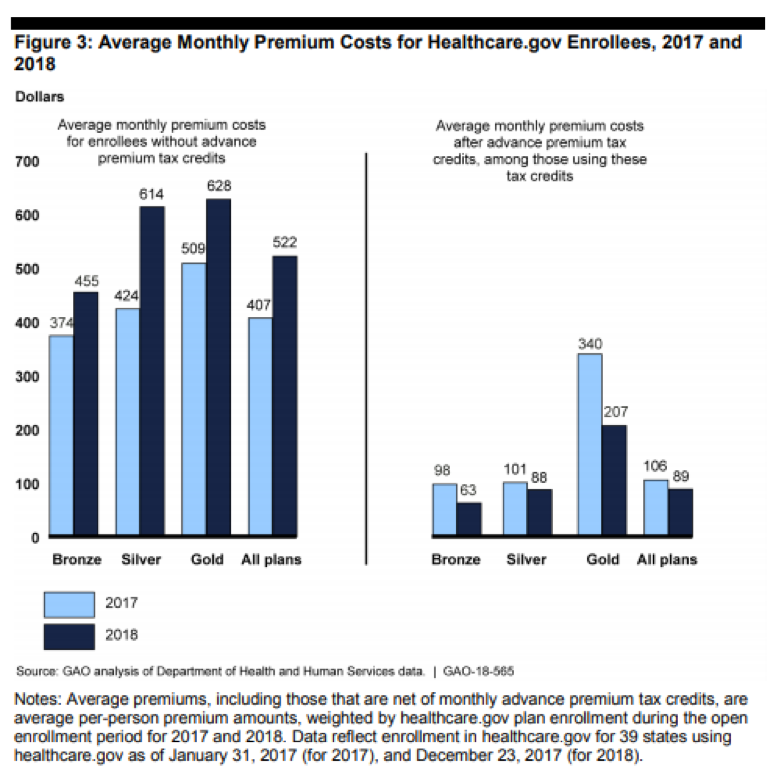A report released Thursday by the Government Accountability Office, Congress’ independent “watchdog” agency, concludes that the Department of Health and Human Services should “enhance its management” of the Affordable Care Act‘s open enrollment period in coming years.
The GAO report, which analyzed the effects of various administration policies on ACA enrollment, found that, in 2018, 8.7 million people bought their non-group health insurance through healthcare.gov, down from 9.2 million people in 2017 (a 5 percent reduction). (Interestingly, enrollment has remained relatively stable in states that run their own exchanges.)
Most of the stakeholders interviewed for the report (a group that included representatives from navigator organizations, state insurance departments, and professional trade organizations) cited affordability as a meaningful driver of enrollment. Premiums on all healthcare.gov plans increased by 30 percent, on average, in 2018, However, individuals eligible for premium tax credits actually saw lower net premiums, on average, in 2018, due to an increase in the value of their premium tax credits; stakeholders said this “likely encouraged enrollment among this group.”
The chart below, from the report, details the different experiences of those eligible for, and ineligible for, premium tax credits:

Interviewees expressed more mixed opinions, however, on how other factors—namely, confusion over the status of the ACA amid the very public repeal-and-replace battle and the Trump administration’s cuts to navigator funding (of 42 percent)—affected enrollment. Some of the stakeholders interviewed by the GAO noted that, in the absence of aggressive federal advertising, states and other groups conducted helpful outreach and education events.
“Many stakeholders also noted that the volume of exchange-related news increased significantly before and during the open enrollment period for 2018 coverage, in part due to the ongoing political debate about the future of the exchanges,” the report states. “These stakeholders agreed that this increase in reporting about the exchanges likely resulted in increased consumer awareness and enrollment, even in cases where the coverage negatively portrayed the exchanges.”
Other stakeholders, however, argued that the lack of government funding for outreach and advertising did likely harm enrollment, particularly among young, healthy consumers. Representatives from navigator organizations, meanwhile, spoke of having to make significant changes to their organizations as a result of funding cuts. Navigators reported decreased outreach events, laying off staff, and closing rural offices.
Notably, the GAO report also highlights and critiques two factors of the administration’s management of the open enrollment period—the rewarding of navigator funding and a lack of numeric enrollment targets. Specifically, the GAO concludes that the administration used unreliable and inaccurate data to determine navigator funding:
[N]avigator organizations received funding that reflected a more limited evaluation of their performance than HHS had used in the past, and that may not have accurately reflected their performance. This raises the risk that navigator organizations will decrease the priority they place on fulfilling a range of other duties for which they are responsible, including providing assistance to traditionally underserved populations.”
The lack of numeric healthcare.gov enrollment totals, meanwhile, “hampers the agency’s ability to make informed decisions about its resources,” the report states.



